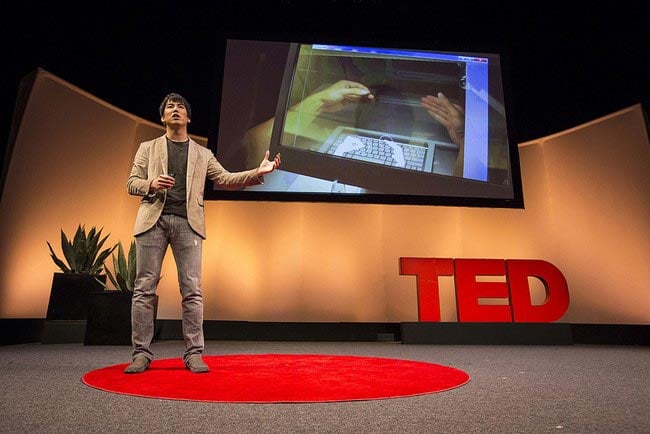Jinha Lee has showcased a very interesting computer at this week’s TED conference in California, called the SpaceTop 3D. This innovative device features a transparent LED display and allows users to interact with 3D graphics using their hands, creating a more immersive and intuitive computing experience.
The video below demonstrates how the SpaceTop works. It is powered by a sophisticated system comprising two cameras: one tracks the gestures made by your hands, while the other tracks your eye movements. This dual-camera setup enables a seamless interaction between the user and the 3D interface, making it feel as though you are manipulating objects in real space.

How SpaceTop 3D Works
The SpaceTop 3D’s transparent display allows users to see their hands through the screen, creating a direct manipulation interface. This is a significant departure from traditional computing interfaces, where users interact with a flat screen using a mouse or touchpad. By integrating hand gestures and eye-tracking, the SpaceTop 3D offers a more natural and intuitive way to interact with digital content.
The hand-tracking camera captures the precise movements of your fingers, allowing you to grab, rotate, and manipulate 3D objects as if they were physical items. Meanwhile, the eye-tracking camera ensures that the system knows exactly where you are looking, providing context-aware interactions. For example, if you are looking at a specific part of a 3D model, you can zoom in or out with a simple hand gesture.
Potential Applications and Future Prospects
The potential applications for the SpaceTop 3D are vast and varied. In fields such as design and engineering, the ability to manipulate 3D models directly with your hands could revolutionize the way professionals work. Imagine architects being able to construct and modify building models in real-time, or product designers tweaking their creations with unprecedented precision.
In education, the SpaceTop 3D could provide students with a more engaging and interactive learning experience. Subjects like biology, chemistry, and physics could be brought to life with 3D visualizations that students can explore and manipulate. This hands-on approach could enhance understanding and retention of complex concepts.
Despite its promising potential, there are currently no plans to bring the SpaceTop to market. This means that, for now, it remains a fascinating prototype rather than a consumer product. However, the technology has garnered significant interest, and it is possible that a company may decide to develop it further and bring it to production.
It certainly looks very interesting from the video, and the concept has the potential to change the way we interact with computers. While we may not see the SpaceTop in stores any time soon, it represents an exciting glimpse into the future of computing interfaces. Let’s hope some company picks up the design and decides to put it into production.
Source Digital Trends
Latest Geeky Gadgets Deals
Disclosure: Some of our articles include affiliate links. If you buy something through one of these links, Geeky Gadgets may earn an affiliate commission. Learn about our Disclosure Policy.